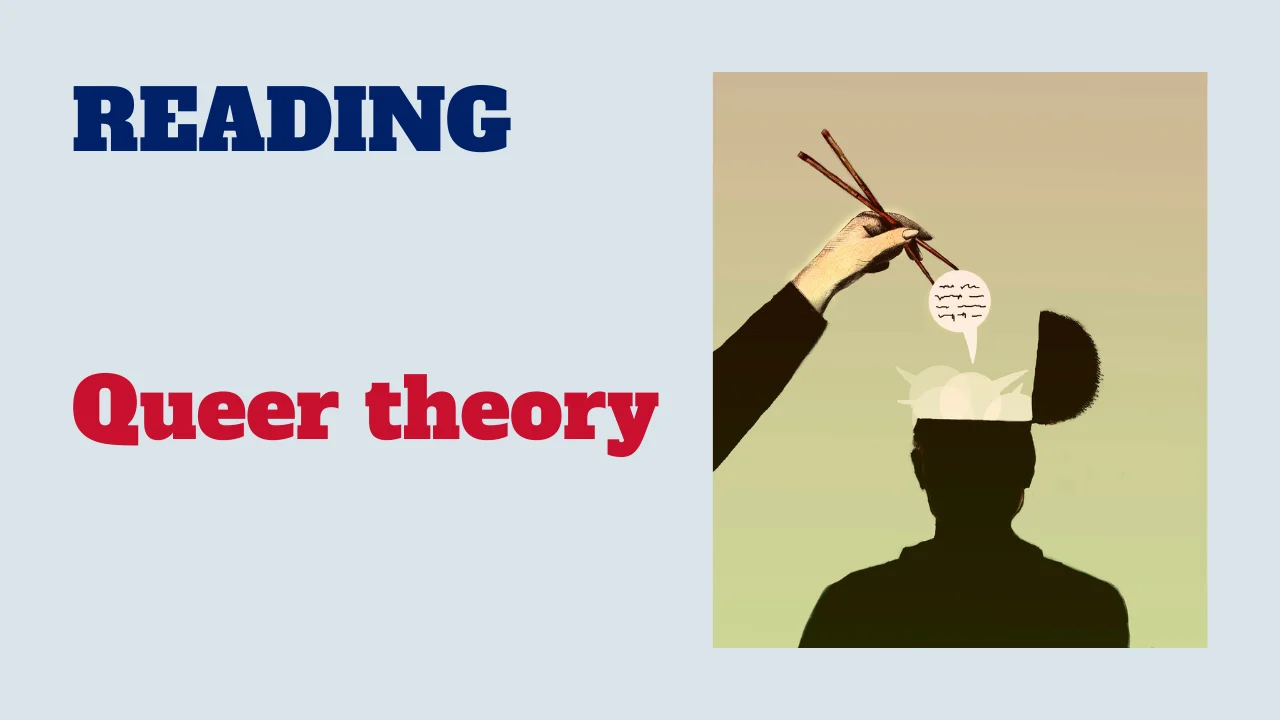Welcome to an exploration of queer theory, a field of post-structuralist critical theory that challenges traditional notions of gender and sexuality. In this reading activity, we will examine the history, definitions, and key concepts of queer theory, as well as its relationship with social and cultural phenomena.

Through this journey, we aim to deepen our understanding of how queer theory interrogates and deconstructs heteronormativity, offering new perspectives on identity, power, and social dynamics.
Text: Queer theory
Queer theory is an interdisciplinary field of critical theory that emerged in the early 1990s, challenging normative and fixed understandings of gender and sexuality. It draws from feminist theory, LGBTQ+ studies, and poststructuralism, questioning the conventional binaries and categories of identity, such as male/female and heterosexual/homosexual.
At the heart of queer theory is the rejection of essentialism, the idea that there are inherent, unchanging properties that define sexual and gender identities. Instead, queer theorists argue that these identities are fluid, socially constructed, and performative. This perspective was notably advanced by philosopher Judith Butler, who, in her seminal work “Gender Trouble” (1990), introduced the concept of gender performativity. Butler posited that gender is not something one is, but something one does—a series of acts and expressions shaped by social norms and expectations.
Queer theory also critically examines how power and knowledge intersect to produce and regulate sexual and gender norms. Influenced by the work of French philosopher Michel Foucault, queer theorists explore how societal institutions, such as the legal system, medicine, and education, enforce normative behaviors and marginalize non-normative ones. This critique extends to the ways in which categories like “heterosexual” and “homosexual” are historically contingent and politically motivated.
A central goal of queer theory is to destabilize and deconstruct these normative frameworks, creating space for a more inclusive and diverse range of identities and experiences. This involves challenging heteronormativity, the assumption that heterosexuality is the default or natural state of being, and advocating for the visibility and rights of those who do not conform to traditional gender and sexual norms.
Queer theory has had a profound impact on cultural and literary studies, sociology, anthropology, and more, providing tools for analyzing and critiquing texts, media, and social practices. It encourages a questioning of taken-for-granted assumptions and promotes a politics of inclusion and diversity, aiming to dismantle oppressive structures and affirm the complexity of human identity.
In essence, queer theory seeks to broaden our understanding of identity, emphasizing its fluidity and the socio-political forces that shape it. It calls for a rethinking of traditional binaries and an embrace of multiplicity in experiences of gender and sexuality.
Comprehension questions
Congratulations on completing this exploration of queer theory! Through this activity, we’ve delved into the history, definitions, and key concepts of queer theory, gaining insight into its critical interrogation of gender and sexuality. By challenging heteronormativity and essentialist views, queer theory offers new perspectives on identity, power, and social dynamics, enriching our understanding of diverse lived experiences. Keep questioning and exploring as you continue your journey into critical theory and social analysis!



